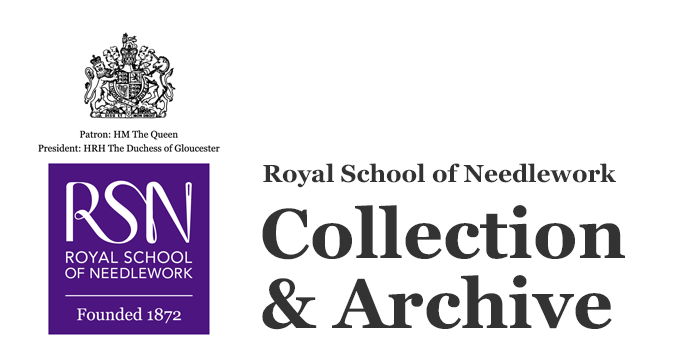Panel
Object name
Date made
Probably 18th century
Place made
Description
Panel featuring three biblical scenes in a variety of canvaswork stitches. May be an 18th-century altar frontal from continental Europe.
Content description
This mysterious object is possibly an altar frontal (also known as an antependium), perhaps from 18th-century continental Europe. It is likely an ecclesiastical textile, but whether it is indeed an altar frontal or something else is debated. The object is embroidered in a variety of canvaswork techniques, many of which are variations on straight stitches. It is worked in silk and passing threads on a linen canvas ground. On the viewer's left is a depiction of Jacob and Rachel at the well, in the middle is the discovery of Moses in the bulrushes by Pharaoh's daughter and two attendants, and on the right is Jacob's Ladder. In each of these Old Testament stories, the individuals experience divine encounters, which can be closely associated with the function of the altar in any Christian church as a site where worshippers call on God. In addition, the altar is traditionally known as a place where covenants were sealed, which further justifies the use of each narrative rendered as all three tales lead to a covenant.
The figures in these scenes wear a mixture of loosely classical and vaguely 18th-century dress, with the influence of Turquerie present throughout. The trio of scenes is bordered on both sides and on top by a double helix of embroidered blue and pink ribbons. The scenes are accompanied by a variety of exotic trees and oversized flowers. It is possible that the scene of Moses in the bulrushes was taken from or inspired by Joseph Wagner's circa 1745 print of The Finding of Moses, after Jacopo Amigoni.
The figures' faces, necks, hands, legs, and feet are worked in tent stitches. Nearly all of the other stitches on this object are worked horizontally or vertically. Canvaswork techniques present in this object include variations on Gobelin, brick, pavilion, and Hungarian stitches. The background is worked in a framed version of pavilion stitch, the garments are worked in Hungarian grounding stitch, the small animals are worked in tent stitches, the twisted border is made up of zigzagging rows of straight Gobelin stitch interspersed with rows of small vertical stitches, and Jacob's ladder is worked in brick stitches.
The composition, with its top and two side borders, suggest this piece may have originally been an altar frontal. In imagery and material it seems to be from the 18th century, but the variety of canvaswork stitches is unusual for altar cloths and for much embroidery of this period. Its bottom edge has been turned under and sewn to a more contemporary silk backing, but its original dimensions would have been similar to its current ones.
The figures in these scenes wear a mixture of loosely classical and vaguely 18th-century dress, with the influence of Turquerie present throughout. The trio of scenes is bordered on both sides and on top by a double helix of embroidered blue and pink ribbons. The scenes are accompanied by a variety of exotic trees and oversized flowers. It is possible that the scene of Moses in the bulrushes was taken from or inspired by Joseph Wagner's circa 1745 print of The Finding of Moses, after Jacopo Amigoni.
The figures' faces, necks, hands, legs, and feet are worked in tent stitches. Nearly all of the other stitches on this object are worked horizontally or vertically. Canvaswork techniques present in this object include variations on Gobelin, brick, pavilion, and Hungarian stitches. The background is worked in a framed version of pavilion stitch, the garments are worked in Hungarian grounding stitch, the small animals are worked in tent stitches, the twisted border is made up of zigzagging rows of straight Gobelin stitch interspersed with rows of small vertical stitches, and Jacob's ladder is worked in brick stitches.
The composition, with its top and two side borders, suggest this piece may have originally been an altar frontal. In imagery and material it seems to be from the 18th century, but the variety of canvaswork stitches is unusual for altar cloths and for much embroidery of this period. Its bottom edge has been turned under and sewn to a more contemporary silk backing, but its original dimensions would have been similar to its current ones.
Dimensions
width: 154cm
height: 47cm
height: 47cm
Materials
Stitches
Techniques
Motifs
Credit line
Gift of Sir Eric Miller, 1956.
Catalogue number
COL.1956.36
Other numbers
RSN 70
© Royal School of Needlework

